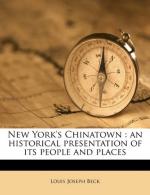|
This section contains 2,116 words (approx. 8 pages at 300 words per page) |

|
Trade. Since ancient times the Chinese have appreciated the speedy, well-built horses raised by people called barbarians, who lived outside the Great Wall and who enjoyed Chinese teas, together with silk, porcelain, and other products. During trade these people did not want to accept any bills of exchange issued by the Tang government (618-907) or paper money invented by the Song court (960-1279) as payment. Tea bricks, used in trading with Tibet, had been one of the first international monies; tea was among the goods used to pay for foreign horses. This trade became so significant that the influential Horse and Tea Commission, a government agency, was created especially to control it. A monopoly was held by the Chinese empire over the tea trade, which continued in the following centuries; the Chinese also developed new tea flavorings to please their barbarian...
|
This section contains 2,116 words (approx. 8 pages at 300 words per page) |

|




